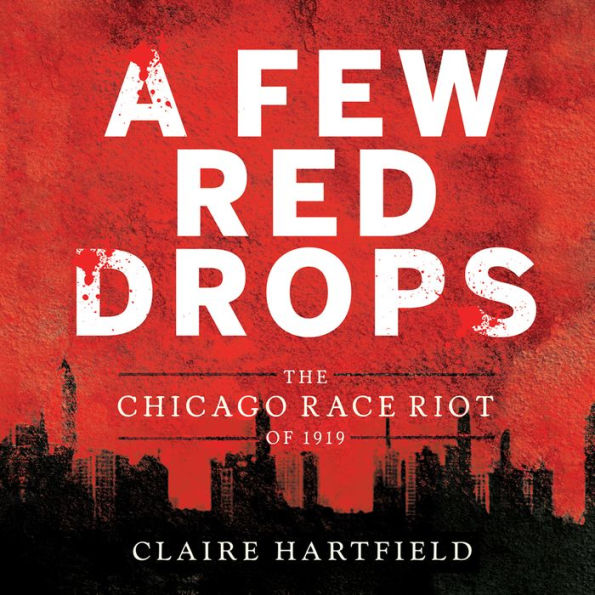Publishers Weekly
11/13/2017
Taking her title from a line in a Carl Sandburg poem, Hartfield (Me and Uncle Romie) examines a weeklong clash between black and white Chicago residents in August 1919. She plunges readers into the story with a description of the event that sparked the riots, the accidental but racially motivated killing of a 14-year-old black boy at a Chicago beach. Hartfield then provides a detailed history of racial tensions in her native city, highlighting the economic and societal impact of the waves of Southern blacks who migrated north to Chicago between the middle of the 19th century and WWI, lured by the promise of work and educational opportunities. Racial tensions, Hartfield explains, were further fueled by the influx of Irish and Eastern European immigrants, themselves the target of discrimination and scorn (“Chicago was a hotbed of prejudice”). The author bolsters her account of this long-simmering conflict with succinct profiles of various Chicagoans, including abolitionists, meatpacking barons, union leaders, journalists, and politicians. Photos, editorial cartoons, and advertisements further immerse readers in a vivid chronicle with no shortage of contemporary relevance. Ages 12–up. Agent: Rosemary Stimola, Stimola Literary Studio. (Jan.)
From the Publisher
"Richly illustrated with contemporary photographs, the narrative is also carefully researched, drawing on accounts from the time... A comprehensive, careful account." —Kirkus "This well-documented text outlines the events leading to the race riot in Chicago in the summer of 1919...This solid entry covers a topic not often mentioned in YA literature, and will support researchers looking for balanced coverage for history, civil rights, and economics reports." — Booklist "Photos, editorial cartoons, and advertisements further immerse readers in a vivid chronicle with no shortage of contemporary relevance."—Publishers Weekly "A worthy and gripping account of early 20th-century African American, immigrant, and labor history framed by the haunting murder of a young black man."—School Library Journal "This readable, compelling history explores the longstanding and deeply rooted causes of the 1919 Chicago Race Riot, which left thirty-eight people dead and 537 wounded (two-thirds of the casualties were black; one-third, white)."—Horn Book "Young readers will find this an excellent example of narrative nonfiction."—VOYA "A sweeping drama."—BCCB —
School Library Journal
12/01/2017
Gr 7 Up—When 17-year-old Eugene Williams was murdered while rafting on the unofficially segregated beaches of Lake Michigan and a white police officer refused to arrest the murderer, Chicago became the site of a deadly race riot. Hartfield backtracks from that moment to explore how turn-of-the-century Chicago was a beacon for both African Americans from the South and European immigrants. However, with the end of World War I, the numerous job opportunities turned scarce and white gang activity against black residents increased. Powerful stories of resistance and inspiring profiles of John Jones, Ida B. Wells, and others who created libraries, hospitals, The Chicago Defender, and other initiatives balance the narratives of discrimination and violence. The stoning of Williams and the riots that followed are not the primary focus; rather, Chicago's history as a destination in post-Reconstruction era United States, its labor movement, the Great Migration, and how all these factors were the underlying elements for the riots make up the bulk of the book. Under 200 pages, this is a relatively slim but powerful account of early 20th-century U.S. history. A plentiful amount of clear and intriguing photography, as well as primary source materials, is included. Back matter includes research citations, an extensive bibliography, and picture credits. VERDICT A worthy and gripping account of early 20th-century African American, immigrant, and labor history framed by the haunting murder of a young black man.—Jennifer Schultz, Fauquier County Public Library, Warrenton, VA
JANUARY 2018 - AudioFile
JD Jackson begins this historical audiobook about the 1919 race riot in Chicago in calm, measured tones. The text then provides backstory about how the people involved in the riots found themselves there. The story is both historically important and relevant today. Jackson’s delivery divides itself between being eloquent and being straightforward, as when he gives equal emphasis and an unchanging pace to such details as the development of unions and the social strata of the various gangs in Chicago. His overall professorial delivery will appeal to listeners seeking an explanation of how and why the Chicago violence erupted, especially at a time when political agitation no longer seems so unlikely. E.J.F. © AudioFile 2018, Portland, Maine
Kirkus Reviews
2017-10-10
A clash on a hot summer's day served as catalyst for a deadly race riot in 1919 Chicago.The deep racial and ethnic resentments that permeated Chicago in the early years of the 20th century exploded into violence when the death of a young African-American teen was caused by a rock-throwing young white man, whom a white policeman refused to arrest. The incident quickly escalated, and after days of unrest, 38, whites and blacks, were dead, and more than 500 were wounded. From the epigram taken from a Carl Sandburg poem, this detailed work is deeply grounded in Chicago history. Details about the actual riot bookend the narrative. In between, Hartfield introduces black Chicagoans from the middle of the 19th century as well as later arrivals who fled the racial violence of the South. She includes the role of the black press in articulating the demands of the black community as they became urban dwellers. The stories of white ethnic groups, their struggles to achieve the American dream, and their racial animosity are examined, as is the role of labor unions. Richly illustrated with contemporary photographs, the narrative is also carefully researched, drawing on accounts from the time. There is a great deal to digest, and it sometimes overwhelms the core story. However, it is successful in demonstrating that past conflicts, like current ones, have complex causes.A comprehensive, careful account. (source notes, bibliography, map, index) (Nonfiction. 12-18)



